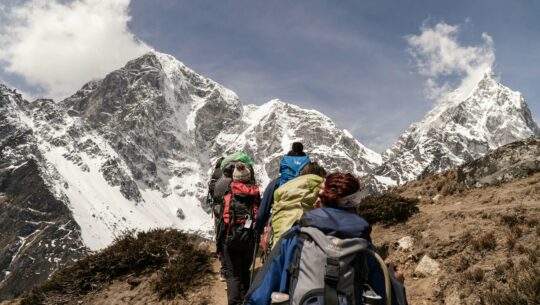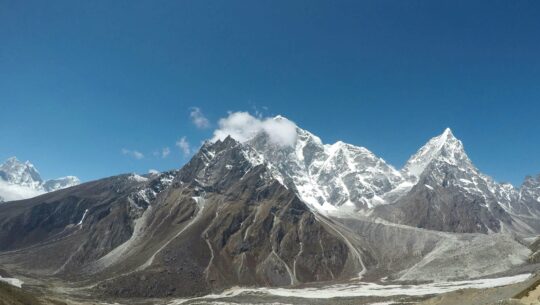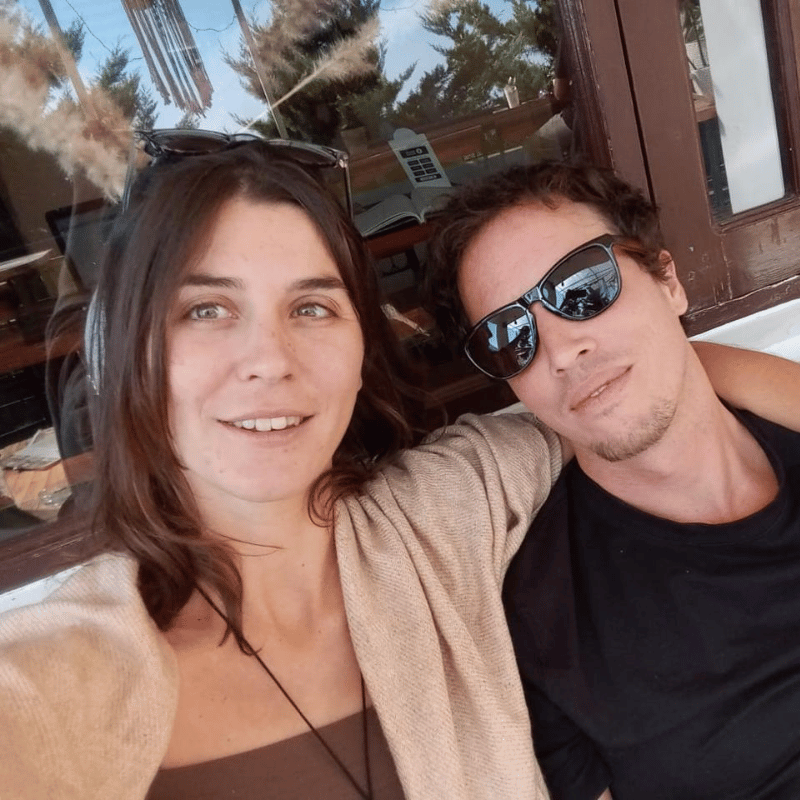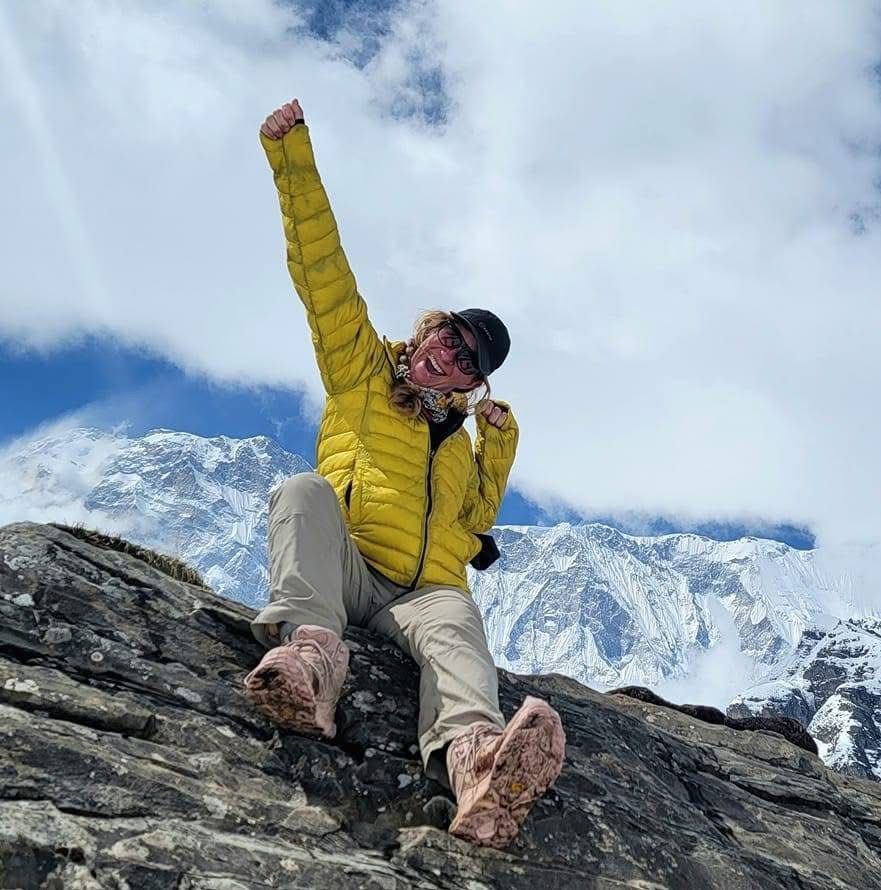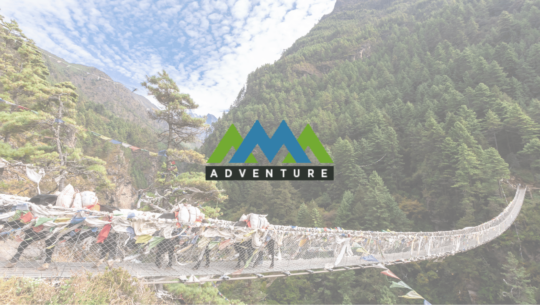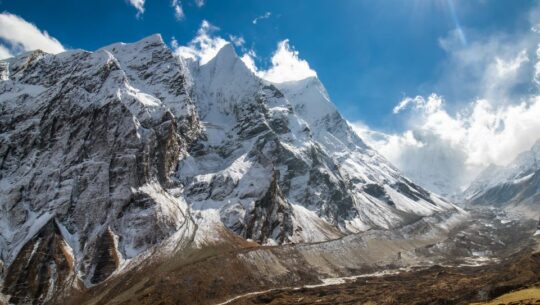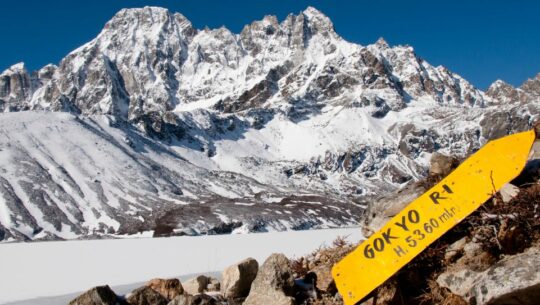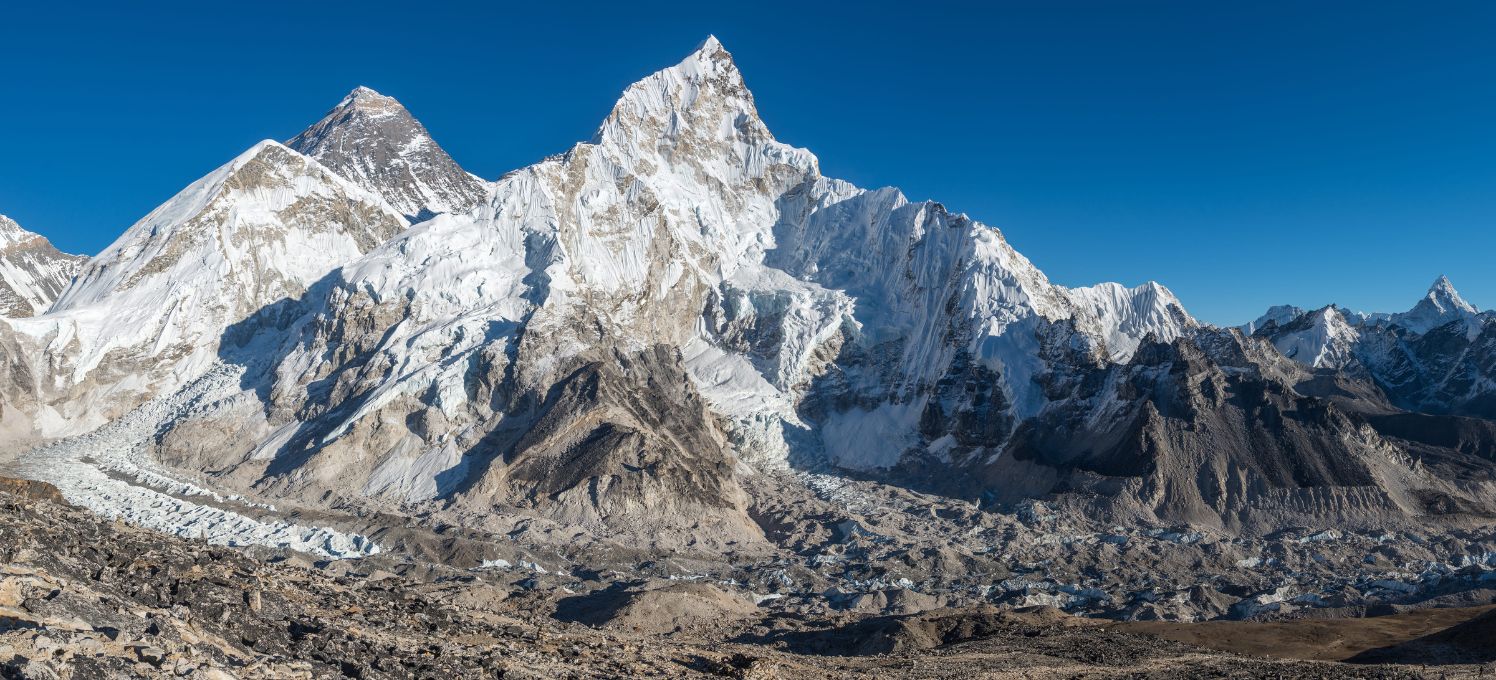
Everest View Trek- 11 Days
On this short and relatively easy trek, explore the foothills of Mt. Everest and enjoy stunning views of the towering peaks that surround the area.
Nepal
11 Days
Moderate
3,840
Autumn & Spring
Hotel &Tea House
Included
Kathmandu
USD 1499
Trip Highlights
- Follow the stone steps that lead through beautiful Sherpa villages, offering a glimpse into the local culture and way of life.
- Get a glimpse of Mt. Everest and enjoy the picturesque peak of Ama Dablam.
- Explore great day hikes in Namche, a village perched high in the Himalayas.
- Visit one of the most famous monasteries in the region.
- Marvel at the snow-covered peaks of Mount Everest, Ama Dablam, and other majestic mountains.
Trip Overview
Everest is the most popular trekking destination in the world, and Nepal boasts some of the best trekking routes. However, when traveling to Nepal with limited time, it’s not always possible to complete the full 16-day trek to Everest Base Camp, and you might also be concerned about high altitudes. In such cases, a shorter trek to the Tengboche Monastery is an ideal alternative. This trek, like the longer one, begins in Lukla and gradually takes you higher up in the valley.
This week-long trek offers a rich experience, featuring trekking past deep rivers and powerful waterfalls, and immersing yourself in the heart of Sherpa culture at the bustling Namche Bazaar. Namche is not only a cultural hub but also offers opportunities for day hikes to beautiful Khumjung villages or stunning Everest viewpoints. In Khumjung, you can savor authentic Sherpa cuisine and then spend a comfortable night in Namche Bazaar.
Tengboche Monastery
Tengboche is the final destination of the Everest View Trek. Here, it is a tradition for local climbers and trekkers to visit the Head Lama at the monastery to receive blessings for a successful trek or adventure. Tengboche offers exceptional close-up views of Ama Dablam, often considered one of the world’s most beautiful mountains. For those unable to complete the entire Everest trek, this shorter hike offers a tailor-made adventure that is unique and rewarding. It is particularly beneficial for those with limited time or those who are not comfortable with high-altitude trekking.
Outline Itinerary
- Day 1: Arrival in Kathmandu (1300 m/4,264 ft)
- Day 2: Swayambhunath tour and trip preparation
- Day 3: Journey to Phakding- Flight to Lukla or Drive to Manthali and Fly to Lukla
- Day 4: Phakding to Namche Bazzar (3,440 m/11,286 ft): 6-7 hrs
- Day 5: Acclimatization Day
- Day 6: Namche to Tenbuche (3,840m/12,288ft): 5- 6 hrs
- Day 7: Tenbuche To Namche (3,440 m/11,00ft): 5 hrs
- Day 8: Namche to Lukla (2860 m/9,152 ft): 7 hrs
- Day 9: Lukla to Kathmandu (1300 m/4264 ft): 30m Flight
- Day 10: Free Day in Kathmandu
- Day 11: Departure
Detailed Itinerary
Day 1: Arrival in Kathmandu (1300 m/4,264 ft)
Upon arrival at the airport, we will be welcomed by a representative of Ama Adventure. Check into a hotel and then explore the surrounding area.
Day 2: Swayambhunath tour and trip preparation
After breakfast, you will head towards Swayambhunath Stupa, also known as the Monkey Temple. Perched atop a hill overlooking the Kathmandu Valley, this ancient stupa is one of the most iconic landmarks of Nepal. Believed to have been self-created, it holds deep spiritual significance for both Buddhists and Hindus. From the top, you can enjoy a panoramic view of the valley, surrounded by prayer flags, shrines, and playful monkeys that give the site its nickname.
Max Altitude
: Lukla (2,840 m)
Trip Duration
: 35-min flight from Kathmandu or 5-6 hr drive & 20-min flight from Manthali, plus 3–4 hrs trek
Meals
: Breakfast, Lunch, and Dinner
Day 3: Journey to Phakding- Flight to Lukla or Drive to Manthali and Fly to Lukla
Early in the morning, we will fly to Lukla which takes 35minutes, Lukla is the starting point of our trekking. The trek to Phakding village has to pass typical Sherpa villages, farmland, Buddhist Chorten, and an incredible view of Kumbila and Kusum kangaroo peak. We walk on the bank of Dudh Koshi Rivers across multiple suspension bridges. After a few hours of walk arrives at Phakding.
During the busy trekking months-March, April, May, October, and November, flights to Lukla are operated from Manthali (Ramechhap) Airport instead of Kathmandu. To catch this early morning flight, we leave Kathmandu between 1:00 AM and 3:00 AM by tourist vehicle for a 5 to 6-hour drive to Manthali, followed by a short 20-minute flight to Lukla.
In the quieter months-January, February, June, July, August, September, and December, flights usually depart directly from Kathmandu. On these days, we start the morning a bit later, around 5:00 AM to 6:00 AM, and head to Kathmandu’s domestic terminal for a 35-minute flight to Lukla. However, flight operation decisions depend on the airline and seasonal passenger flow.
Helicopter Option:
If you wish to skip the long drive to Manthali during the high season, there’s an option to book a helicopter from Kathmandu to Lukla. The cost is USD 550 per person, based on five passengers sharing the flight.
Make sure your bags are packed the night before, as we reach Tenzing Hillary Airport early in the morning. After a warm breakfast in Lukla, porters will meet the group and be assigned (one porter per two trekkers) to carry luggage.
We begin our trek from Lukla by following the trail along the Dudh Koshi River. Descending slightly, the path connects with the main trail from Chaurikharka (2,713 m). We pass through small settlements, including the village of Ghat, before reaching our destination
Overnight in Phakding.
Travelled Distance
: 8 km/ 5 miles
Max Altitude
: Lukla (2,840 m)
Trip Duration
: 35 mins fly/ 3-4 hrs walk
Meals
: Breakfast, Lunch, and Dinner
Day 4: Phakding to Namche Bazzar (3,440 m/11,286 ft): 6-7 hrs
Trek to Namche our trail goes through the handrails of Dudh Koshi River along the way pass through the pine forest and we continue walking on the trail that goes north up the Benkar village. After crossing the Dudhkoshi River and passing through Chumoa and Monjo villages we reached the entrance of the Sagarmatha National park. After crossing the suspension bridge, we reach Jorsalle, which is the last village before reaching Namche Bazaar. After the bridge begins the difficult hike up to Namche Bazaar and enjoys the beauty of Everest view. Along the way to Namche, we pass by waterfalls, bridges, flora, and fauna. Namche Bazaar is the biggest town in Khumbu valley when you reach the much-deserved rest.
Max Altitude
: Namche Bazaar (3,440 m)
Trip Duration
: 5-6 hrs trek
Meals
: Breakfast, Lunch, and Dinner
Day 5: Acclimatization Day
Namche Bazaar is the primary administrative town for the Khumbu region with all its facilities. For Acclimatization, we Hike up to Sagarmatha National park to enjoy the spectacular view of (Chomolumba) Everest, Lhotse, Nuptse, Ama Dablam, Kongde, and many more. To gain, more altitude, and rest before the next ascent you can spend your day hiking to the Everest viewpoint. Another great option can also trek to Khumjung to explore Monastery, Yeti Skul. After lunch return to Namche Bazar.
Max Altitude
: Namche Bazaar (3,440 m), Hotel Everest View Hotel (3,880 m)
Trip Duration
: 4-5 hrs trek
Meals
: Breakfast, Lunch, and Dinner
Day 6: Namche to Tenbuche (3,840m/12,288ft): 5- 6 hrs
The day begins by passing through beautiful rhododendron forest descent to the Dudhkoshi River and equally popular ascent through rhododendron forest to Tengboche. Tengboche village is famous for its Monastery along with panoramic views of Mt. Everest, Nuptse, Lhotse, Ama Dablam, and Thamserku. Upon arrival in Tengboche, we hike to the Monastery to join the Buddhist religious performance.
Overnight at Tenbuche.
Max Altitude
: Tengboche (3,860 m)
Trip Duration
: 5-6 hrs trek
Meals
: Breakfast, Lunch, and Dinner
Day 7: Tenbuche To Namche (3,440 m/11,00ft): 5 hrs
The trek to Namche continues the descent to Pungi Thanga, which is followed by the Bhote Koshi river and a beautiful forest. Meanwhile, the trek back to Namche Bazaar is easier, and passing through the rhododendron forest continues with a climb for an hour to the love Changsha. The walk to the Namche Bazaar is very scenic on a long winding path. head back to Namche Bazaar overnight.
Max Altitude
: Namche Bazaar (3,440 m)
Trip Duration
: 4-5 hrs trek
Meals
: Breakfast, Lunch, and Dinner
Day 8: Namche to Lukla (2860 m/9,152 ft): 7 hrs
Trek from Namche Bazaar to Lukla is the last day of your trekking start with a steep descent and mammal traffic where you are always on the safe side. Here, trekking passes through beautiful small villages such as the Jorsalle, Monjo, and Phakding expecting for short ascent and continuing decent handrails of the Bhotekoshi River crossing it three times. Before reaching Lukla, you have to ascend a gentle slope for 45m to get to the final destination. After a long day, you rest overnight at Lukla.
Max Altitude
: Lukla (2,840 m)
Trip Duration
: 6-7 hrs trek
Meals
: Breakfast, Lunch, and Dinner
Day 9: Lukla to Kathmandu (1300 m/4264 ft): 30m Flight
After early breakfast, hoping to get an early flight back to Kathmandu, the flight from Lukla to Kathmandu takes 35 minutes. Then drive back to Kathmandu hotel normally it takes a hours’ and then checking to Hotel and get a rest.
Return Journey: Lukla to Kathmandu – By Flight or Drive
Lukla to Manthali Flight (March, April, May, October, November):
During the peak trekking months, flights from Lukla operate to Manthali Airport due to heavy air traffic in Kathmandu. The flight takes around 20 minutes, followed by a drive of approximately 5 to 6 hours back to Kathmandu. Travel time may vary depending on road and traffic conditions. You’ll be transferred to your hotel in Kathmandu in a shared tourist vehicle.
Lukla to Kathmandu Flight (January, February, June, July, August, September, December):
In the quieter months, flights usually go directly from Lukla to Kathmandu and take about 35 minutes. Upon landing, you’ll be transferred to your hotel in Kathmandu by shared tourist vehicle. However, please note that flight routes depend on airline decisions based on the number of travelers in a given season.
Helicopter Option:
To avoid the long road journey from Manthali during high season, you can opt for a direct helicopter flight from Lukla to Kathmandu. The cost is USD 550 per person based on a group of five people sharing. This is the fastest and most convenient way to return to Kathmandu.
If you’re not ready to leave just yet, consider extending your stay in Nepal. You could explore the jungle and wildlife of Chitwan National Park, enjoy the relaxed lakeside charm of Pokhara, or even plan trips to neighboring countries like Bhutan, India, or Tibet.
Max Altitude
: Lukla (2,840 m)
Trip Duration
: 35-min flight from Kathmandu or 5–6 hr drive & 20-min flight from Manthali, plus 3–4 hrs trek
Meals
: Breakfast and farewell dinner
Day 10: Free Day in Kathmandu
Today is your free day in Kathmandu for rest and shopping, if you are willing to sightseen around Kathmandu we will organize a tour as well. After your comfortable day, there will be a farewell dinner in the evening to celebrate the successful completion of our journey.
Overnight – Hotel
Meals
: Breakfast
Day 11: Departure
Today is the final day of our trip. The Ama Adventure representative drops you at the airport, wishes you a safe journey, and hopes to see you on your next adventure.
Meals
: Breakfast
Important Note on Itinerary and Lukla Flights
Our regular itinerary may change slightly due to factors beyond our control, such as weather conditions, flight delays or cancellations, natural events, government regulations, political issues, or health concerns. In such situations, we always work to find the best possible alternatives to keep the trek moving forward. Your patience and flexibility during these times are greatly appreciated.
We highly recommend adding at least two extra days to your schedule after the trek. Flights to and from Lukla are often delayed or canceled due to weather, and these buffer days help avoid issues with your international travel plans. You can also choose to customize your trip with extra sightseeing in Kathmandu, adventure activities, or short trips around Nepal before or after the trek.
Lukla Flight Update
Please note: During peak trekking seasons (March, April, May, September, October, and November), flights to Lukla operate from Ramechhap/Manthali Airport, which requires a 5-6 hour drive from Kathmandu due to heavy air traffic. In non-peak months (January, February, June, July, August, and December), flights usually depart directly from Kathmandu.
The choice of departure point is made by the airline and depends on travel volume at the time. Weather, air traffic, and the challenging terrain around Lukla are the main reasons for flight delays or cancellations. Adding a day or two to your itinerary gives you a cushion in case of such disruptions and helps ensure a smooth return for your international flight.
Gallery
What is included
Accommodation
- 4-star hotel in Kathmandu on a twin/double-sharing basis with breakfast
- Guesthouses during the trek (twin-sharing), with attached bathrooms in Lukla, Phakding & Namche
Meals & Drinking Water
- Breakfast, Lunch, and Dinner during the trek
- One hot drink per meal and seasonal fruits
- Farewell dinner on the final night in Nepal
- Purified drinking water throughout the trek (via water filter or purification tablets)
Transportation
- All airport transfers (domestic) by tourist vehicle
- Kathmandu to Manthali by private tourist vehicle
- Round-trip flight between Kathmandu/Manthali and Lukla
Guide & Support Staff
- Licensed, experienced, English-speaking trekking guide (2 guides for groups of 8 or more)
- Porter support (1 porter per 2 trekkers)
- All staff’s wages, accommodation, meals, insurance, gear, and medication
Permits & Entry Fees
- Sagarmatha (Everest) National Park entry permit
- Pasang Lhamu Rural Municipality entrance fee
- TIMS (Trekkers’ Information Management System) card
Health & Safety
- Comprehensive first aid kit
- Daily health checks with a pulse oximeter to monitor altitude-related symptoms
Extras & Souvenirs
- Duffle/kit bag, and a trip completion certificate
Administrative
- All government taxes and administrative fees
What is Excluded
- Meals in Kathmandu – Lunch and dinner while in Kathmandu
- International airfare and airport departure tax
- Travel insurance – Must include high-altitude emergency evacuation coverage
- Alcoholic beverages, cold drinks, and bottled juices
- Tips – For trekking staff and drivers (at your discretion)
- Personal trekking gear and equipment
- Single room supplement Available on request at an extra cost
- Any expenses not mentioned in the Price Includes section
- Nepal Entry Visa
Trip Departure
We organize both solo and group travel, ensuring amazing experiences alongside adventurers from all over the world. Before departure, we reconfirm the number of clients in your group. When a person signs up for the expedition, we guarantee all group departure dates, even if there is only a single person on the Everest View Trek.
Difficulty Level
This trek is suitable for individuals with above-average physical fitness. There is no need for special technical skills, making it accessible to beginners and hikers. However, the trek does reach high altitudes and requires a significant level of physical exertion. Despite hiking for 5 to 10 hours a day, you will gain substantial elevation.
Dates & Prices
We ensure departures on all published dates. If these dates don’t align with your plans, we’re happy to assist in setting a customized date. Whether you’re a solo traveler, a couple, a family, or a group seeking private trips, you can tailor-make your adventure. Reach out to us for pricing details or any other queries.
Meals
Throughout our trek, you’ll savor authentic Nepalese dishes alongside international cuisines such as Tibetan, Continental, Italian, and Indian. Breakfast and dinner will be served at the tea houses or lodge menus where we stay overnight, while lunches will be provided en route to our next destination. During the trek, all meals are included. In Kathmandu, breakfast is provided, and special welcome and farewell dinners will be arranged for our guests.
Lodging
We’ll be accommodated at Standard Hotel in Kathmandu, and the best available teahouses during our trek. Accommodations are based on twin sharing. For those requesting a single room, there will be an additional cost of USD 100. While we aim for rooms with attached washrooms, please note that some tea houses may only have shared washing and toilet facilities. Single rooms are readily available in Kathmandu, Pokhara, and lower-elevation trekking areas, but availability might be limited at higher elevations.
Weather Information
Mountain weather changes a lot with elevation and landscape. Starting in Lukla, you’ll gain height each day, and temperatures will slowly get colder. Days are warmed by the sun, but nights become quite cold. At higher altitudes, nighttime temperatures can drop to the teens or twenties (°F). Mornings usually start with a fleece or jacket, and you can add or remove layers during the day as needed.
Important Notes
Your safety is always our top priority while traveling with Ama Adventure. We emphasize the importance of flexibility for ensuring a safe and enjoyable trip.
Please be informed that flights to Lukla are often delayed due to weather conditions.
If a flight is canceled due to weather, be prepared for alternative arrangements.
Your trip leader has the authority to change the itinerary based on local conditions and their expert judgment.
We reserve the right to modify the itinerary due to medical considerations, unexpected weather conditions, natural disasters, etc.
Our leaders and crew strive to make your trip comfortable and to ensure it runs according to plan. However, we request your preparedness for flexibility if needed.
If you have any queries regarding the information above, please feel free to contact us. We look forward to guiding you on this incredible journey through the stunning landscapes of the Everest region.
Packing List
Here’s a suggested packing list to help you get ready for the Everest Express Trek -11 Days. Please take this as a starting point. You’ll need layers of warmer clothing during the winter.
We provide a 75-liter duffel bag for you to use for the trek. It will be given to you during your pre-trip meeting in Kathmandu. The duffle bag is yours to keep.
General
- Four-season sleeping bag (rated to 0°C or lower)
- Sleeping bag liner
- Insulated down jacket
- Daypack (35-45 liters recommended) with rain cover
Upper Body
- Sun hat or cap
- Warm knitted hat or beanie
- Scarf or neck gaiter (Buff recommended)
- Headlamp with extra batteries
- UV-protection sunglasses
Torso
- Moisture-wicking base layers – lightweight for warmer seasons, thermal for colder months
- Two short-sleeve and two long-sleeve trekking shirts made of quick-dry technical fabric
- Windproof and waterproof outer shell or jacket
- Warm fleece jacket or pullover for added insulation
Lower Body
- Thermal base layers – lightweight for warm months, heavier for cold conditions
- Two pairs of durable hiking pants
- Comfortable pants for relaxing inside teahouses
- Waterproof and windproof shell pants for protection against rain and wind
- One pair of hiking shorts (ideal for lower altitudes and warm days)
Hands
- Liner gloves made of wool or technical fabric for warmth and flexibility
- Insulated outer gloves with a hard shell – ideal for wind and cold at higher altitudes
Feet
- Warm socks made of wool or technical fabric
- Hiking socks (several pairs recommended)
- Optional liner socks (e.g., silk) for added comfort and blister prevention
- Waterproof trekking/hiking boots – well broken-in before the trek
- Ice Cleats or Micro Spikes (recommended from November to March for icy trails)
- Comfortable casual shoes or sandals for teahouse use
- Gaiters – lightweight for dust or heavier ones for snow in cold months
Undergarments
Note: Laundry opportunities are limited, so pack accordingly.
- Quick-drying, moisture-wicking underwear (technical fabric recommended) – adjust quantity based on personal preference
- Sports bras (for women) – supportive and breathable
- Pajamas or comfortable sleepwear for chilly nights in the mountains
First Aid Kits and Medications
(Note: Our guides carry a basic first aid kit, but personal supplies are strongly recommended)
- Sunscreen (high SPF)
- Lip balm with SPF
- Antiseptic or soothing ointment
- Personal medications (for altitude, allergies, pain relief, etc.)
Other Essential Items
- Valid passport
- Extra passport-sized photos (for permits or emergency use)
- Airline tickets (leave a copy with our office in Kathmandu)
- Reusable water bottle or hydration bladder
- Water purification tablets or UV water purifier
- Lightweight towel
- Pillowcase (for hygiene in teahouses)
- Toiletry kit (toothbrush, toothpaste, wipes, etc.)
- Toilet paper (2 rolls minimum)
- High-protein snacks (nuts, energy/protein bars)
- Waterproof/dry bags to protect documents and valuable
Optional
(These can enhance your comfort during the trek and are widely available in Thamel, Kathmandu)
- Power bank or spare batteries
- Camera and mobile phone (for capturing memories)
- Cards, books, or lightweight entertainment
- Pee bottle or pee funnel (especially useful for women at high altitudes)
- Trekking poles (highly recommended for stability)
- Whistle (for safety/emergency use)
- Thermos (to carry hot water/tea during cold days)
Tip: Thamel is full of gear shops where you can purchase or rent trekking essentials at a reasonable price once you’re in Kathmandu.
(These can enhance your comfort during the trek and are widely available in Thamel, Kathmandu)
- Guide Book
- Power bank or spare batteries
- Hand sanitizer
- Energy Bars
- Dry Shampoo
- Outlet Adapter
- Whistle (for safety/emergency use)
- Thermos (to carry hot water/tea during cold days)
- Yaktrax especially for fall and early spring season
- Camera and mobile phone (for capturing memories)
- Pillowcase (for hygiene in teahouses)
- Trekking Poles (highly recommended for stability)
- Pee bottle or pee funnel (especially useful for women at high altitudes)
Tip: Thamel is full of gear shops where you can purchase or rent trekking essentials at a reasonable price once you’re in Kathmandu.
Documents and Logistics
- Flight Information
- Photocopy of Passport
- Passport size photo for Tims and permit(4)
- Medical Insurance Card
- Airline tickets (leave a copy with our office in Kathmandu)
Dates & Prices
We ensure departures on all published dates. If these dates don’t align with your plans, we’re happy to assist in setting a customized date. Whether you’re a solo traveler, a couple, a family, or a group seeking private trips, you can tailor-make your adventure. Reach out to us for pricing details or any other queries.
October 20, 2025 - October 30, 2025
1499Save 191
Group Discount Prices
Frequently Asked Questions
Traveler Reviews



